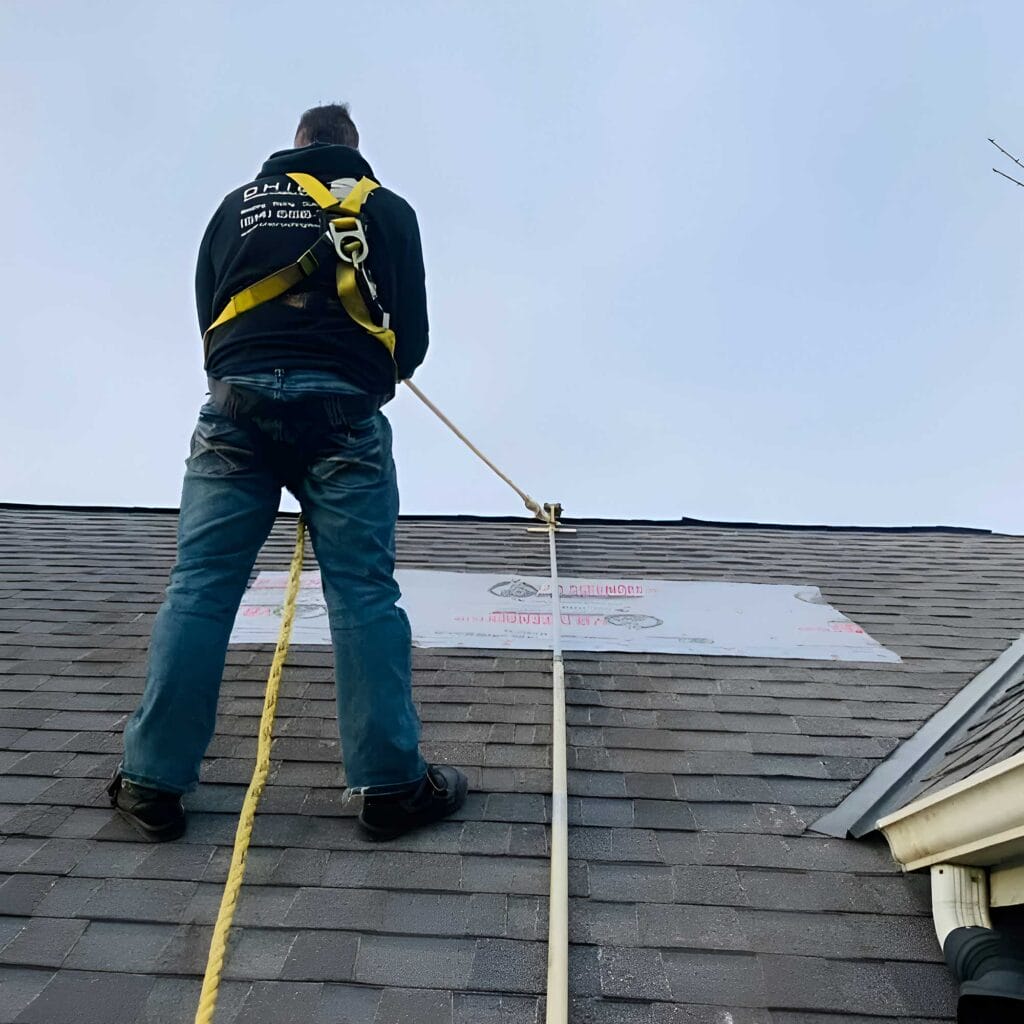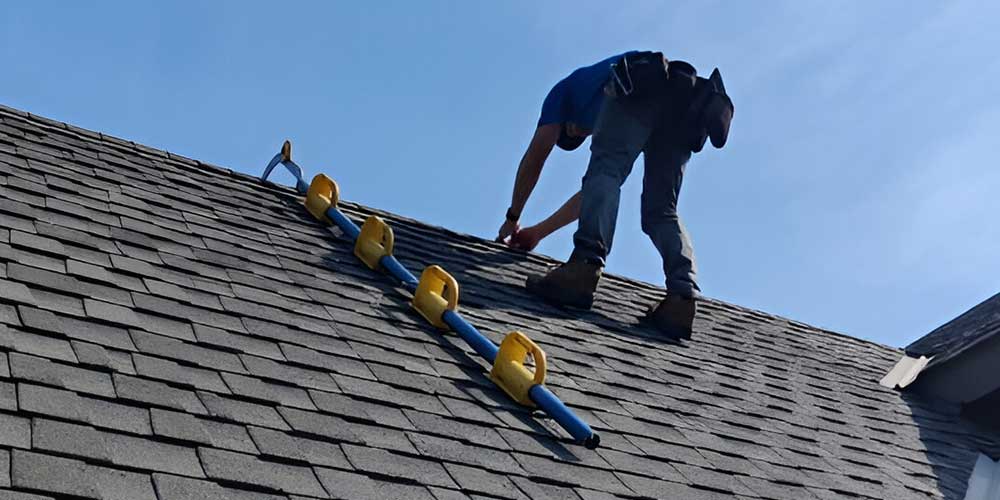Roofing Oahu: Professional Roofer for Your Oahu Residential or commercial property
Roofing Oahu: Professional Roofer for Your Oahu Residential or commercial property
Blog Article
Recognizing the Various Kinds Of Roof Coverings: A Comprehensive Overview for Homeowners
With a variety of choices-- ranging from the conventional gable to the contemporary level-- each kind offers unique benefits and obstacles that must line up with the house owner's particular requirements and ecological factors to consider. As we explore the intricacies of different roof kinds, it becomes obvious that one size does not fit all; the ideal choice may stun you.
Saddleback Roof
Gable roofs, defined by their triangular form, are among one of the most popular roof designs due to their simpleness and performance in dropping water and snow. This design features 2 sloping sides that fulfill at a ridge, permitting reliable drainage and reducing the threat of water accumulation. The steep pitch frequently connected with gable roofing systems boosts their capacity to handle heavy rainfall, making them ideal for various climates.
Along with their functional advantages, gable roofs provide aesthetic convenience. They can be adapted to various architectural styles, from typical to modern-day homes. The design can also accommodate extra functions such as dormer home windows, which boost all-natural light and air flow in the attic room room.
Moreover, saddleback roofs supply adequate room for insulation, adding to power performance. Homeowners can select from a range of roof materials, including asphalt roof shingles, metal, and ceramic tiles, additionally improving customization choices.
Despite their advantages, saddleback roofs might require extra assistance in areas vulnerable to high winds or heavy snowfall. Overall, the gable roofing continues to be a popular selection due to its mix of functionality, sturdiness, and aesthetic appeal.
Flat Roofs
Level roof coverings are usually identified for their minimalist design and practical applications, specifically in industrial and commercial settings (oahu roofing). These roofings feature a straight or almost horizontal surface area, which permits easy construction and functional area utilization. While they might lack the visual charm of pitched roofing systems, level roofings provide numerous benefits, especially in metropolitan environments where optimizing area is crucial
Among the primary advantages of flat roofings is their ease of access. Homeowners can use the roof room for various objectives, such as rooftop yards, balconies, or solar panel installments. Furthermore, level roofs are commonly much more cost-efficient to maintain and set up contrasted to their sloped counterparts, as they require less materials and labor.
However, flat roof coverings do present specific obstacles. Proper drain is necessary to prevent water pooling, which can cause leakages and structural damage. For this reason, picking high-quality waterproofing materials and routine inspections are crucial for making sure long life. Common materials used for flat roofings consist of built-up roof covering (BUR), changed asphalt, and single-ply membrane layers, each offering distinct benefits. In general, flat roofings act as a useful and versatile selection for several homeowners and businesses alike.
Hip Roofs
Hip roofs are identified by their sloped sides that merge on top, developing a ridge. This style stands out from gable roofs, as all 4 sides of a hip roof covering incline downwards toward the wall surfaces, supplying a much more stable framework. The angle of the inclines can vary, enabling convenience in building appearances and performance.
One of the key benefits of hip roofing systems is their capacity to stand up to heavy winds and damaging climate condition. The sloped surface areas allow far better water drain, lowering the threat of leakages and water damage. Furthermore, hip roofs offer increased attic room space, which can be made use of for storage or also converted right into habitable areas.
Nevertheless, constructing a hip roofing can be more pricey and intricate than easier roof covering types, such as saddleback roofs. The extra product and labor associated with developing the slopes and making sure correct structural honesty can lead to higher expenditures. In spite of these drawbacks, lots of property owners prefer hip roofs for their toughness, visual appeal, and capacity for power efficiency.
Mansard Roofing Systems
Mansard roofings, often acknowledged by their special four-sided layout, feature two slopes on each side, with the reduced incline being steeper than the top. This building roofing oahu style, originating from France in the 17th century, is not only visually attractive yet useful, as it makes best use of the usable area in the top floorings of a structure. The high reduced incline permits for even more clearance, making it a perfect option for attic rooms or loft spaces, which can be transformed right into living areas.
Mansard roof coverings are characterized by their versatility, accommodating various architectural styles, from traditional to modern. They can be constructed with different materials, consisting of asphalt shingles, slate, or metal, giving home owners with a variety of choices to fit their budget plans and preferences. Additionally, the design permits the assimilation of dormer home windows, improving natural light and ventilation in the top degrees.
Nevertheless, it is crucial to take into consideration the prospective disadvantages. Mansard roofs might call for more maintenance as a result of the intricacy of their style, and their steep inclines can be challenging for snow and rain drainage. Generally, mansard roofing systems combine beauty with usefulness, making them a prominent choice amongst house owners seeking distinct architectural features.
Lost Roofing Systems
As homeowners significantly seek simplicity and capability in their architectural layouts, dropped roofs have actually emerged as a preferred option. Identified by a single sloping aircraft, a shed roofing system offers a minimalist visual that matches numerous home styles, from modern to rustic.
Among the key advantages of a shed roofing is its straightforward building and construction, which frequently converts to lower labor and material expenses. This layout enables effective water drain, reducing the risk of leaks and water damages. In addition, the upright slope offers adequate room for skylights, boosting natural light within the interior.
Dropped roofings likewise provide convenience in regards to use. They can be properly incorporated right into additions, garages, or exterior frameworks like sheds and structures. Furthermore, this roofing system style can accommodate various roofing materials, including metal, asphalt roof shingles, and even eco-friendly roofings, lining up with eco-friendly initiatives.
However, it is necessary to think about regional climate problems, as hefty snow lots might require modifications to the roofing system's angle or structure. Overall, lost roofing systems present a useful and aesthetically pleasing option for homeowners looking to make the most of functionality without compromising design.
Final Thought


Gable roof coverings, characterized by their triangular shape, are amongst the most popular roofing designs due to their simplicity and efficiency in losing water and snow. oahu roofing. The steep pitch typically connected with gable roof coverings enhances their ability to deal with hefty rainfall, making them ideal for various climates
While they may do not have the visual allure of pitched roofs, flat roofing systems use countless benefits, specifically in urban environments where optimizing room is critical.

Report this page